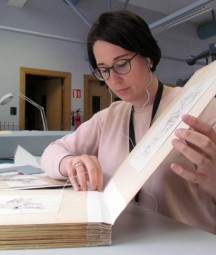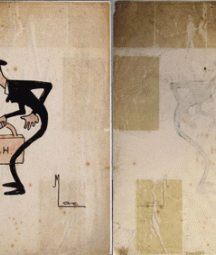by Elodie Leveque - Conservation Intern, Heritage Council
Have you ever wondered how we conserve ancient objects in the National Library of Ireland's collections? How we tackle things like dirt and mould? Every year, acquisitions or donations help develop and enhance our wonderful collections and conservators here help make these items available to readers by various conservation treatments.
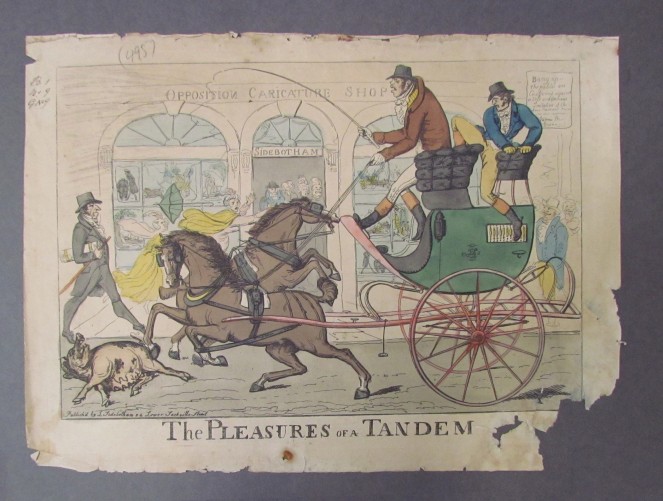
Before treatment: The Pleasures of a Tandem, NLI call no. PD 4340 TX 2
We recently acquired a series of three hand-coloured caricatures, which were treated as part of a survey project. One in particular The Pleasures of a Tandem, (NLI call no. PD 4340 TX 2) was in very poor condition. The caricature is an etching with watercolour from the early 19th century, and was probably displayed in a Dublin shop or pub. It was etched by J Sidebotham, a Dublin publisher of 24 Lower Sackville Street and if you look closely, his shop can be seen in the print itself!
Conservation issues
As you can see from the picture, the paper was torn along the edges and was so badly damaged by mould that the bottom right-hand corner had almost disappeared. The paper was also acidic, making it very discoloured and fragile. Handling the object in this poor condition would have caused even more damage.
But what to do?
I examined the print thoroughly under the microscope and observed it under ultraviolet light. Watercolours can be very sensitive to conservation treatments, and a good knowledge of their composition helps conservators decide what to do next. Pigments such as gamboge (a dark yellow) and Indian yellows, rose madder, and verdigris green were identified on the print. These are typical of the 19th century and helped me to establish when it was painted. Once it was clear that the pigments were at risk to water and other chemicals, I had to decide what to do next.
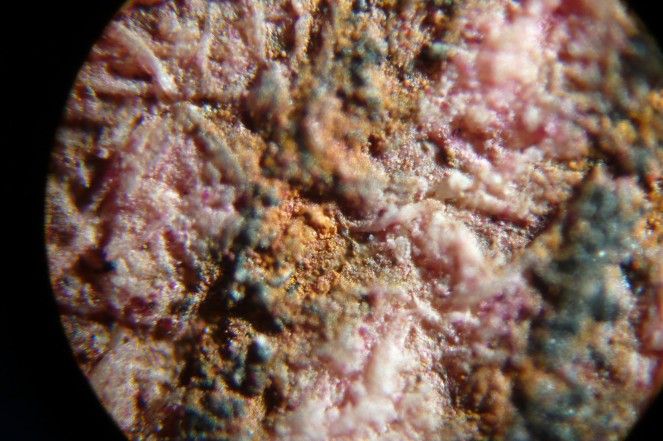
Pigment examination under microscope

Washing on a screen
After surface cleaning to remove dust and dirt, I placed the hand-coloured print on to a screen and washed it in a bath with specially chosen chemicals. This helps conserve the print by removing naturally occurring acidic compounds in the paper, while protecting the fragile pigments.
I then treated the mould damage using a paper-pulping technique: mixing cotton fibres in water, and applying it onto the lost corner with a pipette. This was done over a suction table that drained away the water. I matched the colour of the infill using a mixture of different papers of various tones, reintegrating the loss so that it is still visible but not the first thing you can see. Once pressed and dry, the repair was almost undetectable.
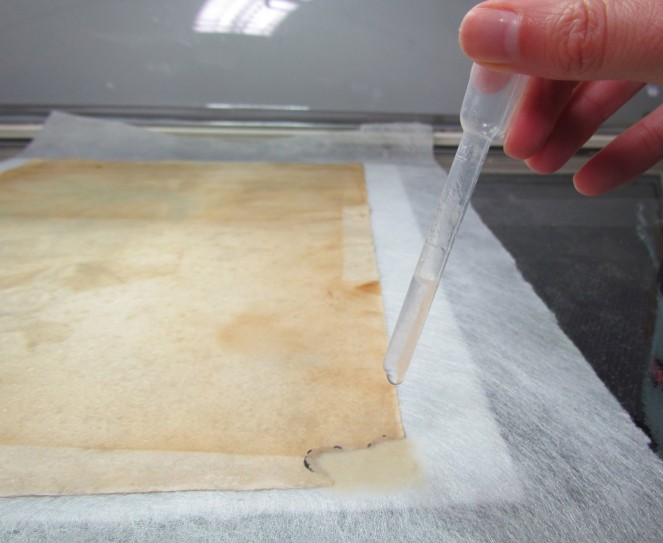
Paper pulping on the vacuum table
Now that the print has been properly treated, it has been mounted so that people can consult it safely. It’s still a little piece of history though so we have to be careful with it so that it can be enjoyed for generations to come!
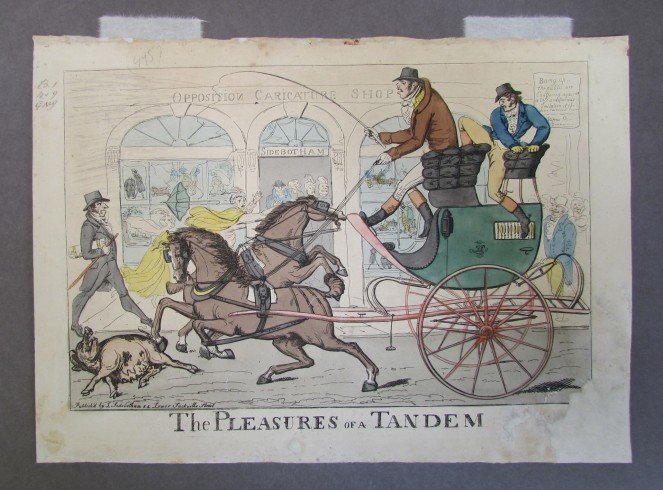
After treatment, the repair is almost undetectable
